| Instead of seeing AI as a replacement, explore how it can augment human capabilities and improve decision-making.
Introduction: Navigating Change in an AI-Driven World
In today’s rapidly evolving landscape, artificial intelligence (AI) is not merely a tool for automation; it represents a profound shift in how we work, collaborate, and innovate. The true potential of AI lies not in replacing human workers but in augmenting their capabilities—empowering people to focus on creativity, complex problem-solving, and emotional intelligence. As organisations face this transformative change, the challenge becomes: How do we maximise the synergy between human intuition and AI’s efficiency?
To thrive in this new era, businesses must move beyond traditional performance metrics, which often fail to capture the full value of AI-human collaboration. By redefining success criteria and embracing a Symbiotic Intelligence Mindset (SymMind)—where humans and AI work in harmony—companies can unlock unprecedented levels of innovation, agility, and productivity.
Welcome to the Navigating Change in an AI-Driven World series. In this collection of articles, we will explore the critical skills, strategies, and ethical considerations needed to succeed in a future where AI plays a central role. From developing emotional intelligence in the age of automation to using AI for ethical decision-making, we’ll provide insights and practical advice to help you adapt, thrive, and lead in the AI-driven workplace.
Introduction: What is SymMind?
The world is moving towards an AI-enhanced future, and to thrive, individuals and organisations must embrace a Symbiotic Intelligence Mindset (SymMind)1. This mindset emphasises collaboration between humans and AI, rather than replacement. A SymMind is built on three core pillars: Augmentation, Not Automation, Continuous Learning & Adaptability, and Trust & Transparency in AI Use.
KEY FACTS
- 75% of executives believe that AI will significantly change the nature of their workforce by 2030. 2
- Symbiotic Intelligence refers to the complementary relationship between humans and AI, leveraging their unique strengths to drive innovation and solve complex problems. 3
SymMind is a framework that encourages a strategic balance between human creativity and AI capabilities. This mindset can be broken down into three core pillars:
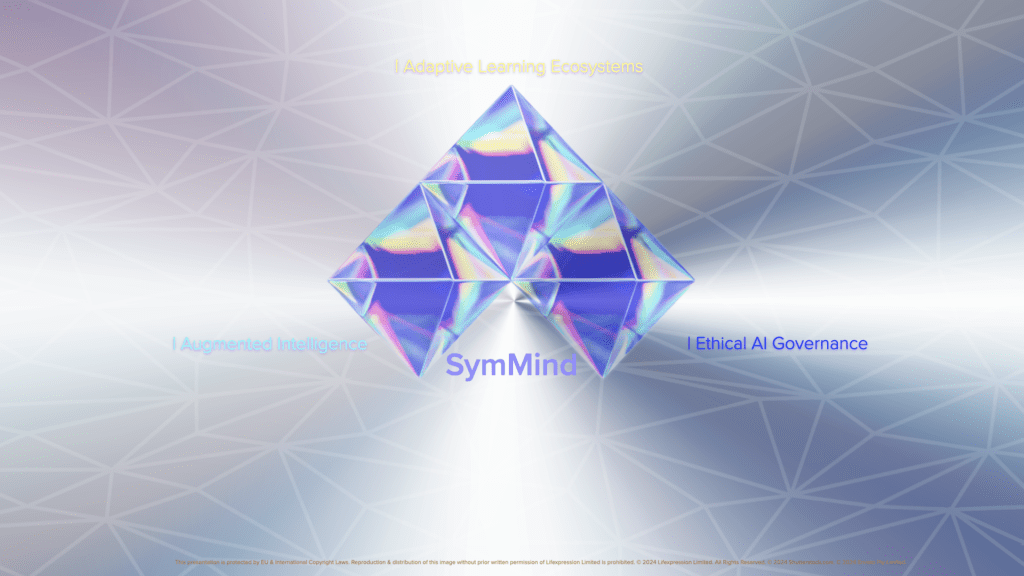
Augmentation, Not Automation – Augmented Intelligence
Focuses on how AI can enhance human potential rather than replace jobs. It promotes a partnership where AI handles data-heavy or repetitive tasks, while humans bring emotional intelligence, problem-solving, and creative insight.
This pillar emphasises enhancing human capabilities through AI collaboration. It focuses on tools and technologies that assist human decision-making, creativity, and problem-solving, rather than replacing jobs. The goal is to create a synergistic relationship where AI enhances the unique strengths of human workers.
Example Behaviours:
- Employees leverage AI for analysis but make decisions using critical thinking and emotional awareness.
- Cross-functional teams are formed with both data scientists and creative strategists to solve complex problems.
Continuous Learning & Adaptability – Adaptive Learning Ecosystems
A key element of the SymMind framework is promoting a culture of continuous learning, where employees are encouraged to understand AI tools and evolve their skill sets to complement AI.
This pillar encourages organisations to cultivate an environment of continuous learning and adaptation. By integrating AI-driven personalised learning platforms, employees can upskill and remain agile in the face of changing technologies and market dynamics. This approach fosters a culture of lifelong learning, essential for thriving in an AI-driven landscape.
Example Behaviours:
- Offering regular training to employees on how to use AI tools effectively.
- Encouraging exploration of new roles or skills that blend human expertise with AI’s analytical capabilities.
Trust & Transparency in AI Use – Ethical AI Governance
For true human-AI collaboration, organisations must foster trust and transparency by demystifying how AI works and ensuring that its use aligns with ethical standards.
This pillar highlights the need for ethical considerations in AI deployment. It promotes transparency, accountability, and fairness in AI applications, ensuring that organisations maintain trust among employees and customers. Establishing ethical guidelines and regular assessments of AI systems is critical for responsible decision-making and fostering a culture of integrity.
Example Behaviours:
- Regular AI literacy sessions to build understanding across teams.
- Leaders share clear, transparent AI deployment policies to ensure employees feel secure and empowered by the technology.
SymMind Overview

Pillar 1: Augmentation, Not Automation
Augmented Intelligence: Enhancing human capabilities through collaborative AI tools and insights.
Empowering Human Potential with AI Support
SymMind sees AI as a tool to enhance human capabilities rather than replace them. The goal is not to automate jobs out of existence but to augment the way we work, think, and solve problems. AI assists with data processing, analysis, and even decision-making, allowing humans to focus on creativity, empathy, and strategic insight.
A Shift in Perspective
Organisations are increasingly viewing AI as a collaborative partner rather than a replacement for human workers. SymMind is about recognising that AI can augment human skills by handling repetitive or highly data-driven tasks. In turn, this frees up humans to focus on areas where they truly excel, such as critical thinking, creativity, and leadership.
Companies like Amazon and Microsoft use AI to streamline logistics and data analysis, allowing employees to focus on strategic innovation rather than mundane tasks. AI is integrated into operations to complement human effort, not replace it.
Real-World Alignment:
Augmentation, not automation mirrors strategies seen in companies adopting Robotic Process Automation (RPA) 3 for administrative processes while keeping humans in the loop for complex decision-making.
KEY FACTS
- Companies using AI for augmentation report 10-15% higher productivity gains compared to those focused solely on automation. 4
- An MIT study found that AI can enhance worker productivity in tasks like decision-making by as much as 20%. 5
Pillar 2: Continuous Learning & Adaptability
Adaptive Learning Ecosystems: Fostering continuous learning and adaptability in a dynamic environment.
Thriving in a World of Perpetual Change
In an AI-driven world, change is constant. Developing this mindset means committing to continuous learning and cultivating adaptability. AI tools evolve rapidly, and so must the skills and strategies we use alongside them. Lifelong learning becomes not a choice but a necessity, with workers needing to update their skills regularly to remain competitive.
KEY FACTS:
- The World Economic Forum predicts that by 2025, 50% of all employees will need reskilling.6
- Continuous learning is a hallmark of resilient organisations and individuals, with AI-enabled learning platforms providing personalised development pathways.7
The Lifeblood of AI-Era Organisations
Organisations that embrace this mindset understand that *lifelong learning* and the ability to adapt are critical for employees in an AI-powered world. AI is evolving rapidly, and workers need to evolve with it by continuously updating their skillsets.
Google and IBM have embedded continuous learning cultures within their organisations, offering employees access to AI-driven learning platforms like Coursera and Udacity. These platforms provide personalized learning paths, driven by AI, to upskill employees and ensure they remain at the cutting edge of innovation. 8
Real-World Alignment:
SymMind ties in perfectly with global trends like the rise of AI-augmented learning platforms and micro-learning initiatives that focus on short, targeted lessons to keep skills relevant in real-time.
Pillar 3: Trust & Transparency in AI Use
Ethical AI Governance: Ensuring responsible and transparent AI use in decision-making processes.
Building Trust in the Age of Intelligent Machines
This mindset is rooted in trust. For humans to collaborate effectively with AI, transparency in how AI systems function and make decisions is crucial. Trust is built through clear communication about AI capabilities and limitations, ethical use, and maintaining data privacy standards. Without trust, the adoption of AI in critical areas like healthcare, finance, and governance could face significant resistance.
KEY FACTS:
- 40% of consumers worry about the ethical use of AI and its implications for privacy and decision-making. 9
- Companies that are transparent about their AI processes report 25% higher user adoption rates. 10
- The EU AI Act, set to regulate AI systems in the coming years, emphasises the importance of transparency and accountability in AI applications. 11
Building Ethical AI Ecosystems
For organisations to fully embrace AI, trust and transparency are essential. SymMind promotes transparency in AI decision-making processes, emphasising the ethical use of data, privacy concerns, and clear communication about AI’s role in business operations.
Salesforce has been a leader in AI ethics, releasing guidelines to ensure that AI systems are transparent and explainable to both users and customers. Their Ethical AI Framework provides a clear roadmap for how AI should be developed and deployed, ensuring decisions are traceable and understandable. 12
Real-World Alignment:
SymMind aligns with the push towards ethical AI frameworks, as seen with the European Union’s AI Act, which enforces transparency, accountability, and fairness in AI systems. It’s about ensuring that AI enhances human trust rather than creating new concerns.
Integrating SymMind into Organisational Culture
In many industries, organisations are adopting elements of SymMind by balancing human and machine strengths. It’s about reshaping the workforce with AI as an ally, a tool that empowers rather than displaces workers. SymMind can help organisations structure this integration through:
- AI-augmented roles: Where AI assists in data processing, freeing up time for strategic work.
- AI-enabled continuous learning: AI-powered systems for upskilling employees in real-time.
- Trust-building through transparency: Ensuring AI decision-making processes are understood and embraced by employees and stakeholders.
Leading companies already integrate SymMind by using AI to augment their workforce, investing in employee upskilling, and fostering an open, trust-based culture around AI. From personalised learning programmes to AI-augmented creative processes, the examples are growing.
KEY FACTS
- Salesforce has integrated AI tools that augment sales representatives’ capabilities by automating administrative tasks, freeing up time for strategy and client relations. 13
- Siemens uses AI in predictive maintenance, allowing engineers to focus on higher-level problem-solving and innovation. 14
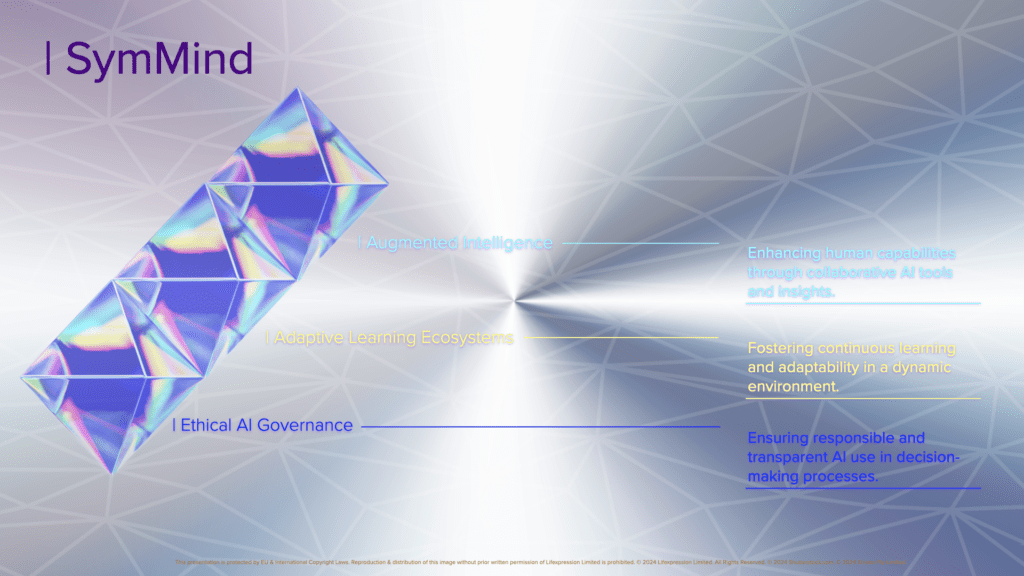
How Organisations are Embracing Symbiotic Intelligence
Several industries are actively embracing symbiotic intelligence of AI-human collaboration, leveraging the unique strengths of both to enhance productivity, innovation, and decision-making. Here are some notable examples:
Healthcare
Example: IBM Watson Health combines AI with human expertise to assist doctors in diagnosing diseases and recommending treatments. The integration of AI helps analyse vast amounts of medical data, enabling healthcare professionals to make more informed decisions. 15
Finance
Example: JPMorgan Chase employs AI to streamline processes such as fraud detection, risk assessment, and customer service. Their COiN platform uses AI to analyse legal documents, freeing up legal teams to focus on more strategic tasks. 16
Manufacturing
Example: Siemens utilises AI and machine learning to optimise production processes. By combining AI insights with human operators’ skills, they enhance operational efficiency and product quality while empowering employees to engage in more complex problem-solving. 17
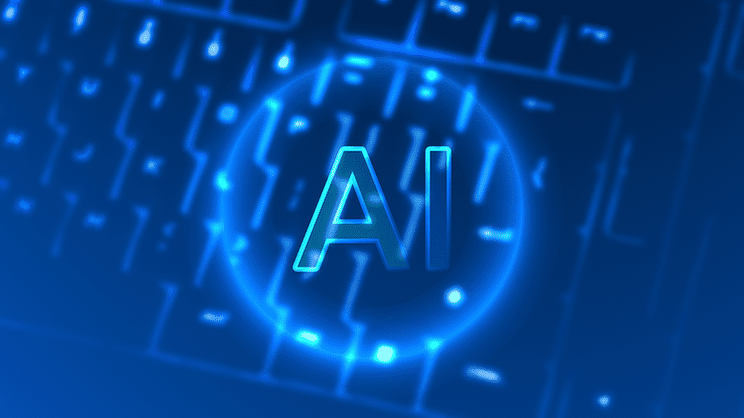
Retail
Example: Walmart employs AI-driven analytics to optimise inventory management and improve customer experience. Store associates are equipped with AI tools to make real-time decisions, ensuring that customer needs are met more effectively. 18
Transportation and Logistics
Example: UPS uses AI to optimise delivery routes and manage logistics operations. Their drivers leverage AI-driven insights to improve efficiency while still applying their judgment and experience in navigating complex delivery environments. 19
Education
Example: Coursera integrates AI to provide personalised learning experiences for students. By analysing learning patterns, AI can recommend tailored courses while instructors focus on delivering high-quality, engaging content. 20
Customer Service
Example: Zendesk offers AI-driven tools like chatbots that assist customer service representatives by handling routine inquiries. This allows human agents to focus on more complex customer issues, enhancing overall service quality. 21
Energy
Example: Enel leverages AI to predict energy consumption patterns and optimise grid management. Human operators work alongside AI to make strategic decisions that balance supply and demand effectively. 22
These industries showcase a growing recognition of the importance of harmonising human skills with AI capabilities. By fostering a collaborative mindset, organizations can harness the strengths of both to drive innovation, improve efficiency, and create a more adaptive workforce.
As these industries illustrate, the successful integration of AI and human intelligence not only enhances operational efficiency but also fosters a culture of innovation. To navigate this evolving landscape, organisations can adopt the Symbiotic Intelligence Mindset (SymMind)—a framework that encourages collaboration, continuous learning, and ethical AI use. This mindset empowers employees to embrace AI as a partner rather than a replacement, ultimately driving greater success in a technology-driven world.
Symbiotic Intelligence: A New Paradigm for Human-AI Collaboration
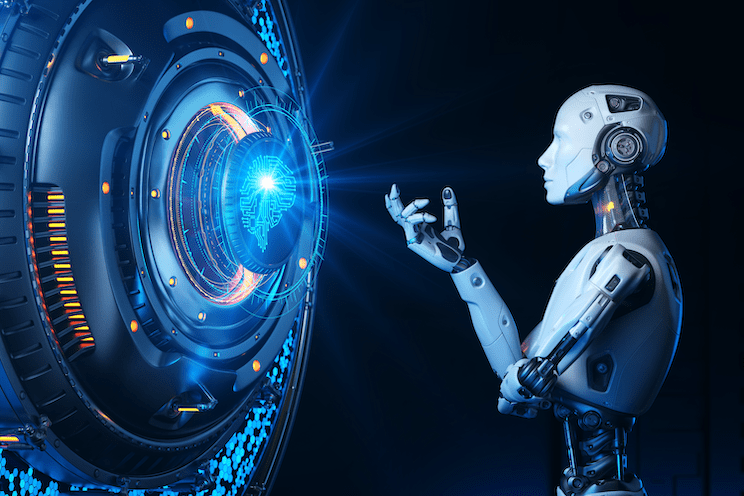
Symbiotic Intelligence refers to the complementary relationship between humans and artificial intelligence (AI), where both entities leverage their unique strengths to drive innovation and solve complex problems. This relationship is characterised by mutual enhancement, with AI augmenting human capabilities while humans provide context, empathy, and ethical considerations that machines cannot replicate.
Core Pillars of Symbiotic Intelligence
1. Augmentation, Not Automation:
Augmented Intelligence: Enhancing human capabilities through collaborative AI tools and insights.
At the heart of Symbiotic Intelligence is the principle of augmentation, where AI systems are designed to enhance human capabilities rather than replace them. This means automating repetitive tasks to allow employees to focus on higher-level strategic thinking and creativity. For instance, Salesforce has integrated AI tools that free up sales representatives from administrative tasks, enabling them to concentrate on building client relationships and developing strategies. Organisations that adopt an augmentation mindset experience improved employee engagement and higher job satisfaction .
2. Continuous Learning and Adaptability:
Adaptive Learning Ecosystems: Fostering continuous learning and adaptability in a dynamic environment.
In a rapidly evolving technological landscape, continuous learning is essential for both individuals and organisations. Symbiotic Intelligence encourages a culture of lifelong learning, where employees regularly update their skills and knowledge to remain competitive. Companies like IBM and Google exemplify this through their AI-driven learning platforms, which offer personalised development pathways tailored to individual learning styles and career goals. This adaptability not only helps employees stay relevant but also fosters a resilient organisational culture that can navigate change effectively .
3. Trust and Transparency in AI Use:
Ethical AI Governance: Ensuring responsible and transparent AI use in decision-making processes.
Trust is a foundational element in the collaboration between humans and AI. Organisations must prioritise the ethical use of AI, ensuring that systems are transparent and explainable. The EU AI Act emphasises the importance of accountability and fairness in AI applications, addressing consumer concerns regarding the ethical implications of AI technologies. By fostering trust through transparent processes and responsible AI practices, organisations can enhance user acceptance and promote a positive perception of AI in the workplace .
In conclusion, embracing Symbiotic Intelligence empowers organizations to create a future where humans and AI work together harmoniously. By focusing on the pillars of augmentation, continuous learning, and trust, organizations can unlock unprecedented levels of innovation and productivity. This mindset not only prepares them for the challenges of an AI-driven world but also cultivates a workplace culture that values collaboration, adaptability, and ethical responsibility.
How to Begin Adopting SymMind
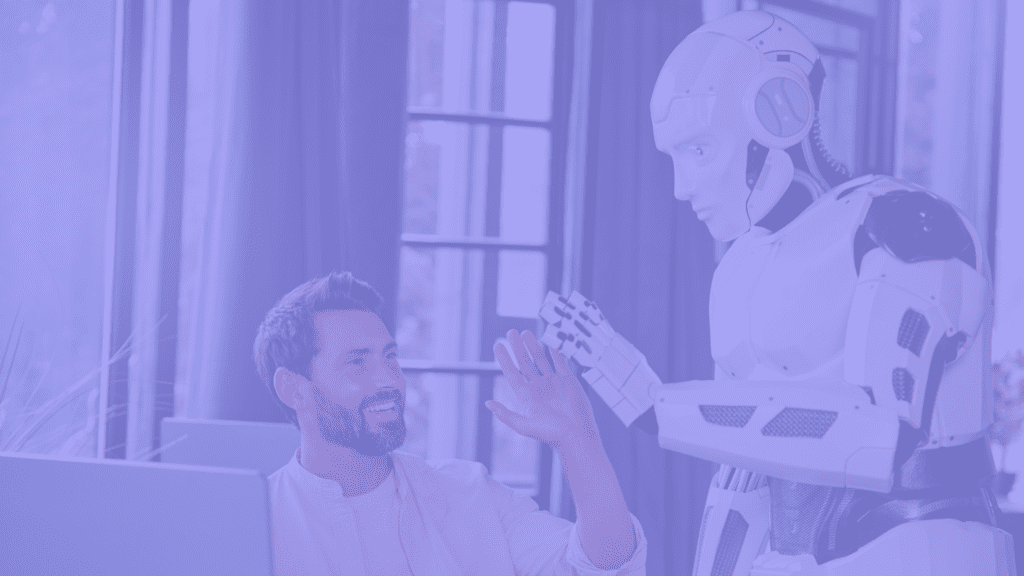
For companies looking to embrace the Symbiotic Intelligence Mindset, consider the following strategies:
Emphasise Augmentation Over Automation:
- Begin by assessing roles that could benefit from AI assistance rather than outright automation. Focus on how AI can complement human skills, enabling employees to perform their tasks more effectively.
Build a Learning Culture:
- Implement AI-driven learning platforms that personalise employee upskilling based on their roles and aspirations. Encouraging a culture of continuous learning ensures that employees remain relevant and adaptable in a changing technological landscape.
Ensure Transparency:
- Regularly communicate the use of AI, its processes, and its impacts on decision-making. Promoting ethical use of data builds trust and fosters a positive relationship between employees and AI systems.
Ways to embed this Model
AI Enhancement Labs:
- Organise internal workshops where employees can brainstorm innovative ways that AI could enhance their daily tasks. This collaborative approach encourages creativity and involvement in AI implementation.
Human + Machine Project Teams:
- Form mixed teams where specific tasks are delegated to AI, while strategy and decision-making remain human-led. This structure not only optimises productivity but also enhances employee engagement and ownership over their work.
The Future of Work with SymMind
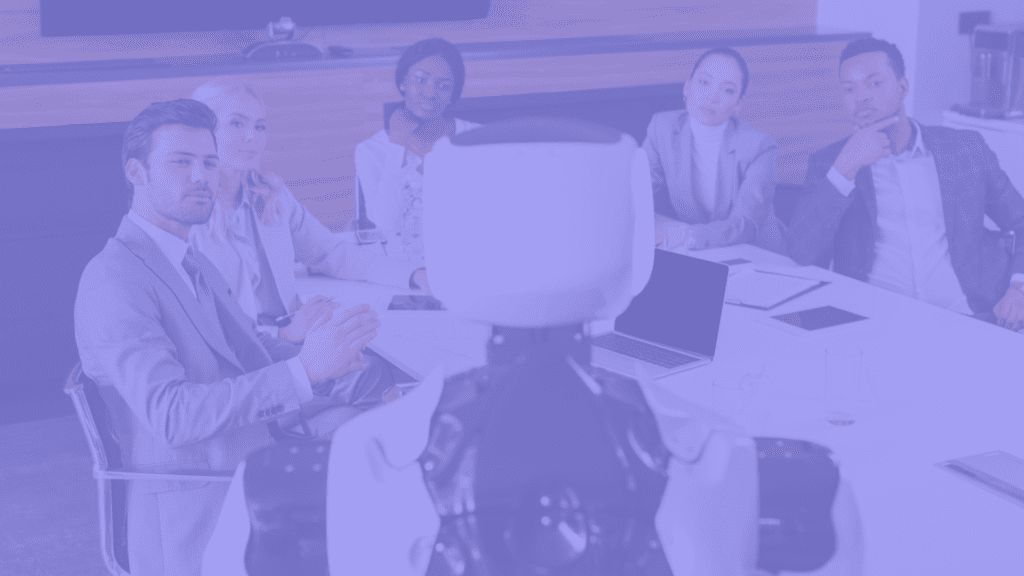
As AI continues to evolve, the need for a Symbiotic Intelligence Mindset will only grow stronger. Embracing augmentation, continuous learning, and trust will be critical for organizations striving to stay ahead in the future of work. The organizations and individuals who thrive in the AI era will be those who view AI as a collaborator, not a competitor.
This model positions organizations as forward-thinking, fostering a culture where human ingenuity thrives alongside AI. It’s a unique framework that inspires new perspectives on change and collaboration.
Are you ready to adopt SymMind? Start by assessing how AI can augment your work or organisation, commit to continuous learning, and build trust in the systems that will shape the future. By integrating the Symbiotic Intelligence Mindset into your organisational culture, you can unlock the full potential of AI while empowering your workforce to excel in a collaborative environment.
References:
1 Devlin, Moira (2024) Symbiotic Intelligence Mindset (SymMind) Model (2024)
2 Accenture (2018). AI: Built to Scale. How Businesses Can Accelerate AI to Drive Growth. Accenture Strategy accenture.com
3 Willcocks, L. and Lacity, M. (2016) Service automation: Robots and the future of work. Steve Brookes Publishing
4 McKinsey & Company (2018). Artificial Intelligence: The Next Digital Frontier? McKinsey Global Institute
5 Li, D., Brynjolfsson, E., & Raymond, L. (2024). Generative AI at Work. MIT Sloan School of Management, National Bureau of Economic Research. Available at: MIT Sloan School of Management Website (MIT Sloan)
6 and 7 World Economic Forum (2020) The Future of Jobs Report 2020 marketbusinessnews.com
8 IBM’s Learning System: Qin, L., & Kochan, T. A. (2020). The Learning System at IBM. MIT Sloan School of Management mitsloan.mit.edu
Google’s Learning Initiatives: Grow with Google. (n.d.). Online Courses with Certificates. Grow with Google
9 Forbes (2023) Ethical AI: The Consumer Perspective forbes.com
10 McKinsey & Company (2023) Transparency and Trust: The Key to AI Adoption mckinsey.com
11 European Commission (2021) Proposal for a Regulation on a European Approach to Artificial Intelligence commission.europa.eu
12 Salesforce (2023) Salesforce Ethical AI Framework salesforce.com
Forbes (2022) Salesforce’s Ethical AI Framework: Guiding Principles for AI Development forbes.com
13 Salesforce (2022) Salesforce AI: The Future of Sales salesforce.com
Forbes (2023) How Salesforce Is Using AI To Help Sales Teams Work Smarter forbes.com
14 Siemens (2022) AI and Predictive Maintenance: The Future of Industrial Operations Siemens
McKinsey & Company (2021) How AI is Reshaping Industrial Maintenance McKinsey & Company mckinsey.com
15 IBM (2022) Watson Health IBM Watson Health merative.com
Forbes (2023) How AI Is Transforming Healthcare forbes.com
16. JPMorgan Chase (2023) Artificial Intelligence at JPMorgan jpmorganchase.com
Harvard Business Review (2022) The Benefits of Artificial Intelligence in Finance hbr.org
17 Siemens (2022) Digitalization in Manufacturing Siemens
McKinsey & Company (2021) The Future of Manufacturing: How AI is Reshaping the Industry mckinsey.com
18 Walmart (2022) Walmart and Artificial Intelligence walmart.com
Business Insider (2023) Walmart’s AI Strategy to Enhance Customer Experience businessinsider.com
19 UPS (2022) How UPS Uses Artificial Intelligence ups.com
Forbes (2023) The Impact of AI on Logistics and Transportation forbes.com
20 Coursera (2022) How AI Personalizes Learning coursera.org
EdTech Magazine (2023) AI in Education: The Future of Learning edtechmagazine.com
21 Zendesk (2022) How AI is Changing Customer Service zendesk.co.uk
Harvard Business Review (2023) The Role of AI in Customer Service hbr.org
22 Enel (2022) AI in Energy Management enel.com
McKinsey & Company (2023) AI in Energy: Optimising Performance McKinsey mckinsey.com
This article protected by EU & International Copyright Laws.
© 2024 Lifexpression Limited All Rights Reserved. © 2024 Moira Devlin © 2024 Shutterstock.com. © 2024 Envato Pty Limited

